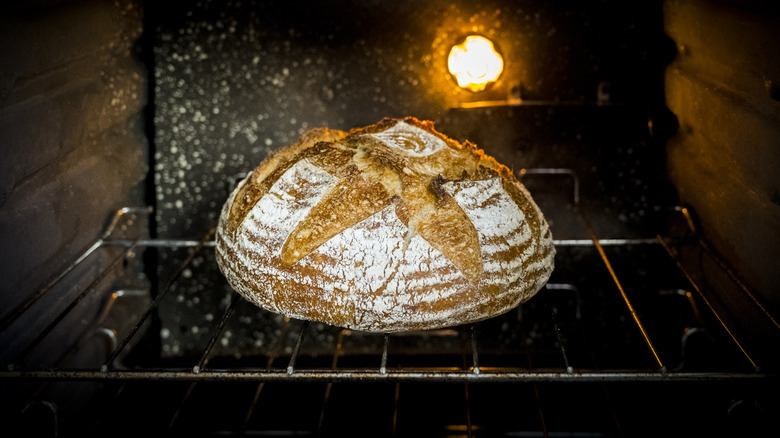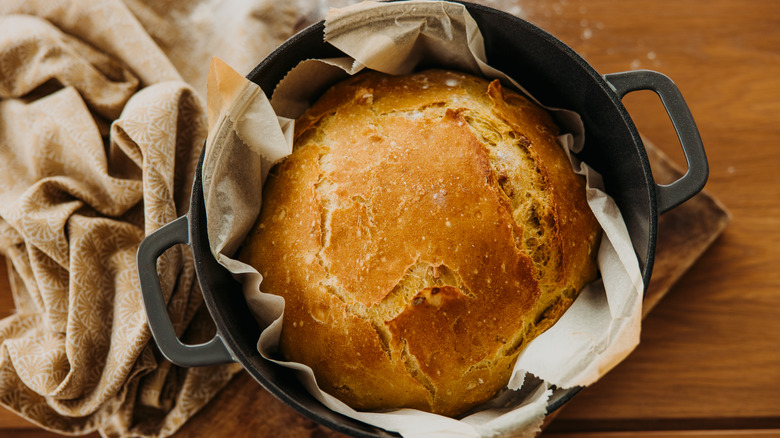How Steam Affects The Crust And Crumb Of Your Bread
If you've baked a loaf of crusty Italian bread at home you know how rewarding the process can be. You've also probably had your fair share of failures — there are so many factors to take into consideration. But if you've ever been disappointed by the lack of oven spring or your crust comes out dull and tough, it's a matter of steam.
Bread starts to rise mere minutes into baking. A high oven temperature gives the yeast one last oomph, and the trapped gasses expand, giving your bread the coveted oven spring. The steam keeps the surface of your bread pliable, allowing for that continued expansion — this is also why we score the bread, to give the bread room to keep rising. Any steam on the bread itself will dissolve sugars and evaporate, leaving behind the shiny, crackly crust we're aiming for. All this happens within the first five to ten minutes of baking, so steam is vital to getting a loaf of bread to its full potential, both crumb- and crust-wise. With no steam, the crust hardens too quickly in the heat, resulting in a compact loaf with a dull crust. With no steam to keep the surface pliable, you also run the risk of your loaf bursting.
You can achieve steam in your home oven
Not all of us are blessed with a steam injection oven like many of the pros use. But you can get the same steamy effect at home with your own oven. A Dutch oven is one of the simplest ways to create a steamy environment. As soon as you begin preheating your oven, pop your Dutch oven in there, too. Let it preheat for about a half hour before very, very carefully placing your shaped and proofed sourdough loaf of bread in and replacing the lid. The steam released from the dough will basically self-steam the bread. Remove the lid after 20 minutes for the bread to finish baking. Baking your sourdough in a Dutch oven is recommended by many home bakers, but it does take some practice.
You can also use a spray bottle before putting the loaf in the oven — spray the surface of the bread, and spray once more into the oven before closing the oven door. Spray once again after about five minutes. You have to act quickly to effectively trap heat and steam. You can also use the method recommended by Paul Hollywood — pour water into a hot roasting tray in the oven at the same time as you load in the loaf. This method works well for the home baker because you don't need specialty equipment or a heavy (and extremely hot) Dutch oven — definitely a bread-baking hack you'll want to know.

